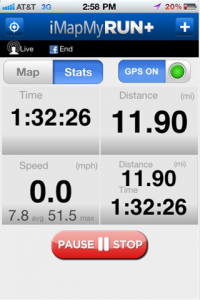As discussed in the recent post about The Power of Habit: Why We Do What We Do in Life and Business by Charles Duhigg, exercise routines can be one of the most challenging things to adopt and maintain. Although the endorphins produced by exercise can be powerful reinforcers, for many the routine is simply not a top priority among life’s other responsibilities. In order to assist in making exercise a consistent part of your weekly schedule, we’ve got a few tips and tools.
Workout Routine Tips:
- Scheduling: Instead of fitting in a workout whenever you have availability, decide on a specific time and days per week that you will commit to exercising. Add the workout to your calendar as if it were an appointment, and make sure that no other consistent obligations are going to interrupt.

- Workout Cues: As recommended by Duhigg, creating a cue for exercise will help put you in the mood for the task. He recommends setting out your workout gear the night before a morning workout. This will help to remind you that exercise will be your first task of the day, not checking your email or picking up the house.
- Accountability: For those who do not enjoy working out, any excuse will usually be enough to keep it from happening. Ensure you make it to scheduled workouts with an accountability trick. Some popular tricks include, working out with a more motivated friend so that you are not alone, signing up for a scheduled workout, such as a bootcamp, or tracking workouts and progress in a logbook. The last one may seem trivial, but science shows that logs provide a sense of accomplishment and encourage consistency.
- Find Your Niche: Not all workouts are created equal. If you are new to exercising, I recommend trying out many different styles of workouts until you find something that you like. The more fun you have while working out, the more likely you are to continue. And remember, whether it’s running, yoga, or Zumba, the more you do it, the better you will get, so don’t worry if at first it’s very challenging.
- Reward Yourself: An important part of making anything into a habit is the reward aspect. Create achievable goals for your exercise routine that are tied to non-food rewards. For example, for the first month, set a goal of working out at least 3 times per week for one hour per day. At the end of the month, reward yourself with a new piece of workout gear or clothing. The vital thing to remember is that goals should be reasonable, specific (where, when, what, how long), and measurable.
Tools:
- MapMyRun App: This GPS-enabled app allows you to track distance, routes, time, and the pace of your runs. Just like the accountability tip above, this tool will help you to see your progress and share it with friends. A great way to get a little extra encouragement is to allow the app to post your run details to Facebook. You’ll be surprised how much praise and support the posts will garner.
- FitnessBuddy App: This is another exercise tool that provides hundreds of exercises and workouts for all fitness levels. It also has a workout journal for tracking what you did and when you did it.
No matter how you workout, just remember that the consistency is the key to maintaining the routine.
Good Luck!
Mandi


